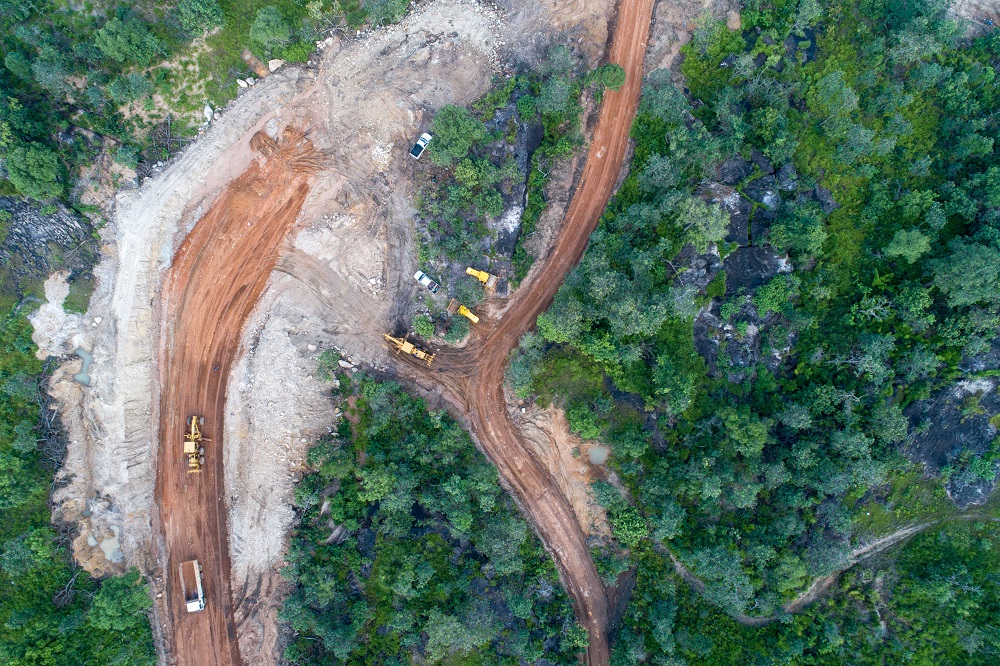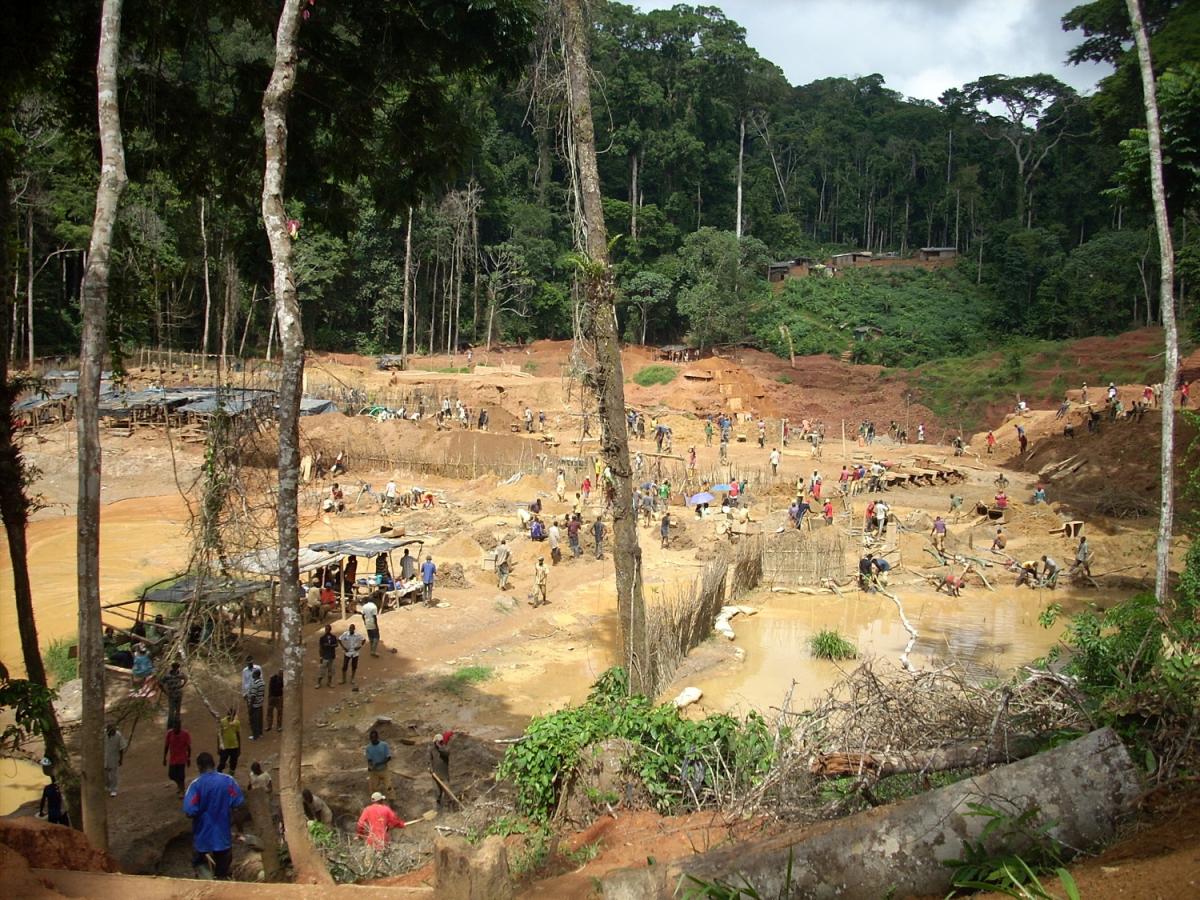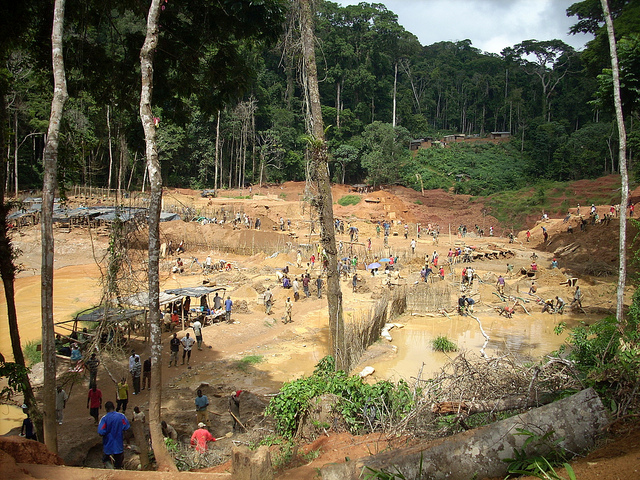artisanal mining

A low-carbon future must protect the world’s forests

The shift to a low-carbon future that includes clean technology such as solar panels, wind turbines, electric vehicles and batteries will require a lot of minerals. In fact, experts predict that between now and 2050 we will need more minerals than have been produced over the past 100 years. This mineral-intensive future has implications for our forests, vital to mitigate global warming. A climate-smart mining approach that protects the world’s forests is essential to reduce carbon emissions and fight climate change. Currently about 1,500 large-scale mines in the world are in tropical forests and a further 1,800 are under development or currently non-operational. More than half of these large-scale forest mines are in low- or lower-middle-income countries.
Forests provide an important carbon sink for mitigating climate change. According to the World Resources Institute, if tropical forests combined were a country, deforestation would rank third in carbon dioxide–equivalent emissions, behind China and the United States. Generically speaking, forest loss is driven by economic activity, mainly commercial and subsistence agriculture. Yet, mining plays an important, though less understood role, accounting for an estimated 7 percent of total forest loss. As the future of our planet hinges on tenths of degrees Celsius, 7 percent may well make the difference.
At a national level, mining is contributing to emissions from forest loss in numerous countries and is a dominant cause of deforestation in some. For example, in Suriname, mining is responsible for 73 percent of total deforestation, with the majority attributed to artisanal and small-scale mining (ASM) for gold.
With so much at stake, the World Bank has developed what we call a forest-smart approach to mining – ensuring that this increased need for metals and minerals will not be at the expense of forests. Thus a Climate-Smart Mining approach also needs to be Forest-Smart. Three new reports released today offer solutions to address this challenge.

So, what mining takes place in forests? Many different minerals are mined in forests, with gold, iron ore, and copper most commonly mined by large-scale operators in forests. Bauxite, titanium, and nickel are the most reliant on forest-based mines, as the ores that contain them are mostly found in forest areas. All these minerals are crucial components of low-carbon technologies as well as for cell-phones and computers.
Importantly, it isn’t principally the mine itself that causes deforestation. Our research shows that a mine is often surrounded by large-scale forest losses in areas outside the mining permit area, with notable spikes in deforestation when the mines are first established. This forest loss is largely the result of new roads, railways, ports and other infrastructure built to transport extracted minerals. In addition, the development of large-scale mines in previously uninhabited or inaccessible areas attracts people looking for new economic opportunities. The settlements they establish drive forest loss due to firewood demand, wildlife poaching, agriculture expansion and ASM activities.
To address this deforestation, a forest-smart approach to mining requires strong governance to manage the development and impacts of the mining sector, protect forests on a landscape level, and recognize and protect local community tenure and rights. It also requires responsible corporate behaviour, empowered communities, and engaged civil society stakeholders.
With this in mind, we analyzed almost 30 case studies of both artisanal and small-scale mines as well as large-scale mining operations to identify best practices that can improve forest outcomes and bad practices to be avoided. The result is a large number of practical examples and a set of 14 forest-smart mining principles.
Based on our case studies, no single site, operation, company, or country is wholly forest-smart. Yet, our case studies also demonstrate that a variety of countries are implementing forest-smart practices and applying strong policies. One key finding of our work is that political will and coordination between government entities and other stakeholders is crucial for forest-smart outcomes.
In Madagascar, the establishment of coordination platforms between managers of a national park and local authorities helped to develop effective strategies to manage illegal artisanal mining in the park and improve agricultural practices to reduce pressure on forest.
In Ghana, a mining company included community stakeholders as partners in planning, decision making, and implementation to achieve positive outcomes for forests and communities. This ongoing consultation led to communities receiving long-term stakes in the work through secure forest plots. used for sustainably managed small-scale commercial production.
In Zambia, a mining company partnered with the Forestry Department and the Department of National Parks and Wildlife to manage a large forest landscape, including the West Lunga National Park, together with local communities to protect the forest landscape and prevent further deforestation.
Our analysis identified priority countries for applying the forest-smart principles, using the criteria of high forest cover, high economic dependence on mining, a high density of mines in forest areas, and significant greenhouse gas emissions from forest degradation. Countries identified include Guinea, Ecuador, the Democratic Republic of Congo (DRC), Zambia, and Indonesia, countries where the World Bank is active in both forest conservation and mineral sector governance, and thus well positioned to help bring together experts, governments, companies and communities to implement forest-smart mining approaches. By working together, we can utilize the raw materials needed for clean-energy technologies and conserve forests at the same time – protecting the world’s forests, reducing emissions and stepping up to the climate challenge.
This blog by Kirsten Hund and Erik Reed was originally published by The World Bank
For stories and updates on related activities, follow us on twitter and facebook , or subscribe to our mailing list for regular updates.
Last Updated : 06-16-2024

Extractive Industries in Forest Landscapes: Balancing the Trade-offs and maximizing the benefits
CHALLENGE
About 3.5 billion people live in countries rich in oil, gas, or minerals. Many of these countries also suffer from poverty, corruption, and conflict stemming from weak governance. Nonrenewable mineral resources play a dominant role in 81 countries, which collectively account for a quarter of gross world product, half of the world’s population, and nearly 70 percent of those in extreme poverty. The World Bank Group’s involvement in extractive industries seeks to help countries seize the opportunities that mining companies offer for development, poverty reduction, and boosting shared prosperity. Most World Bank Group interventions in extractive industries are in the governance area, to encourage transparent management of industry revenues so that they provide benefits for local people and so that the industries themselves respect local community needs and the environment.
At the same time, more than one-quarter of the world’s active mines and exploration sites overlap with, or are situated within, a 10-kilometer radius of, a strictly protected area. Nearly one-third of all active mines and exploration sites are located within areas of intact ecosystems of high conservation value, most of them forests. Almost one-third of all active mines are located in stressed watersheds. Infrastructure developments associated with oil and mineral developments represent the most important threat to ecosystems through physical incursion into forests and disruption of the ecosystems. Road and railway development could be particularly harmful. Building a new road drives direct deforestation through tree cutting, but this impact is generally limited. Most importantly, roads are the major vehicle for forest degradation through further incursion into forest areas for agriculture, hunting, artisanal mining, and other potentially harmful activities. Added to that, a large-scale mine has considerable energy requirements, which will lead to the construction of hydropower dams, oil and gas pipelines, and power lines. Nevertheless, oil and mining companies can contribute considerably to sustainable forest management, and have done so in the past, by implementing measures for forest conservation and community development in and around their concessions.
There is increasing pressure on individual companies to implement standards to mitigate and offset negative environmental impacts. Yet there is a limit to what private-sector-driven, project-specific measures can do. These kinds of voluntary standards also tend not to affect artisanal and small-scale miners and other "rogue" players, who tend to have the largest environmental footprint. In order to address all players, an integrated landscape-level planning and enforcement process is needed.
APPROACH
This program will transform the way the World Bank Group works with its clients on extractive industries in forest-rich countries, so that oil, gas, and mineral extraction contribute to sustainable forest management and poverty reduction for the people depending on those forests. The program also introduces this knowledge to the Bank's vast networks of private companies and government partners.
Activities have been chosen based on the most urgent issues impacting the forest sector, and existing World Bank Group projects that have the potential for the greatest impact and replicability. Two major studies are underway, focused on Artisanal and Small-Scale Mining (ASM) and Large-Scale Mining (LSM), and how to make these sectors forest-smart.The lessons and recommendations will be based on both good and bad practices in different parts of the world, looking at a range of geographical, governance, and ecological factors. The two studies include analysis of the thematic areas and the identification of 15-20 case studies each, following a detailed analytical framework that was developed to support consistency and comparability.
RESULTS
This project has been completed. The outcomes were achieved, the development of tools and analysis around forest smart mining was largely successful. The development of an understanding related to what could be achieved in Artisanal and Small-Scale Mining (ASM) and Large Scale Mining (LSM) as well as biodiversity offsets were important accomplishments. The rich list of thematic case studies pulled together experiences from all over the world, highlighting good and bad practices on a continuum as well as making practical recommendations for dialogue with private sector stakeholders as well as with Governments. The three reports below identified the first known lessons learned for implementing a “forest-smart” approach to LSM and ASM:
- Forest-Smart Mining: Identifying Good and Bad Practices for Artisanal & Small-Scale Mining in Forest Landscapes
- Forest-Smart Mining: Identifying Factors Associated with the Impacts of Large-Scale Mining on Forests
- Forest-Smart Mining: Offsets case studies
Based on these reports, a series of 16 Principles have been identified that should guide a ‘forest smart’ policy framework for the mining sector. These have been integrated in an executive summary. Based on this, tools will also be developed for the relevant stakeholders.
The findings of the reports were presented at several high-level policy and industry events raising awareness within the mining industry on the impact of mining on deforestation and the possibilities to address the carbon footprint of mines by actively working on mitigating their forest footprint and striving for net gain of forest cover in and around their operations.
There is also a direct relevance of the work for World Bank investments, such as the Forest Investment Program (FIP). The results have also informed the preparation for additional funding in Ghana, the Zambia REDD+ Investment Plan, and a new mining operation in DRC.
The work has also been integrated in a larger project currently being developed by the World Bank Energy and Extractives practice, called ‘Climate Smart Mining’. This looks at the carbon footprint of mineral extraction for the minerals that are being used, at an increasing scale, for building clean-energy technologies. Being’ Forest Smart’, is addressed as one of the most effective tools for mining companies to address their carbon footprint.
For stories and updates on related activities, follow us on twitter and facebook , or subscribe to our mailing list for regular updates.
Last Updated : 06-15-2024








